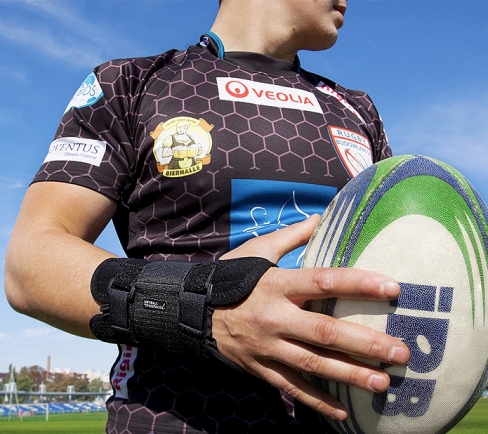Knee brace – when is it worth considering one?
Knee pain is one of the most common orthopedic complaints. It may result from injury, overload, malalignment of the limb axis (such as genu varum), or from knee osteoarthritis (gonarthrosis). This issue affects not only older adults – studies show that up to one in three people develop degenerative changes within 10 years following anterior cruciate ligament (ACL) reconstruction. With age, the risk increases – according to Brandt et al. (2017), symptoms of gonarthrosis are already present in 22.9% of individuals over the age of 40.
Early intervention and joint support can significantly improve quality of life. One tool gaining recognition in the medical community is the unloader knee brace. As shown by Matheny et al. (2012), regular use of such a brace improves quality of life, reduces pain and stiffness, and allows individuals to maintain physical activity for longer – both in everyday life and recreationally.
Patients participating in the study reported a significant reduction in pain symptoms and improved joint function (WOMAC score). Additionally, 93% of respondents considered the ability to maintain general health through restored mobility to be “very important,” and 89% indicated that improved walking ability was a key benefit.
Interestingly, 35% of patients declared a reduced need for anti-inflammatory medication after several months of brace use – an important consideration in limiting pharmacological therapy, particularly among older adults. These findings are further supported by Negrin et al. (2017), who reported that 54% of patients reduced their analgesic intake, while 22% were able to discontinue medication altogether.
A properly fitted knee brace not only stabilizes the joint but also improves gait biomechanics by offloading the affected compartment of the knee. Custom-made braces based on 3D scanning technology – such as the Joint Craft 3D model – offer precise anatomical fit, enhancing both comfort and therapeutic outcomes.
Such braces are recommended for patients following knee arthroscopy, in cases of joint instability, ligament injuries (ACL, PCL, MCL, LCL), genu varum, and degenerative joint disease. They not only support the return to activity but help maintain it – which is essential for overall quality of life and preventing further joint deterioration.
















